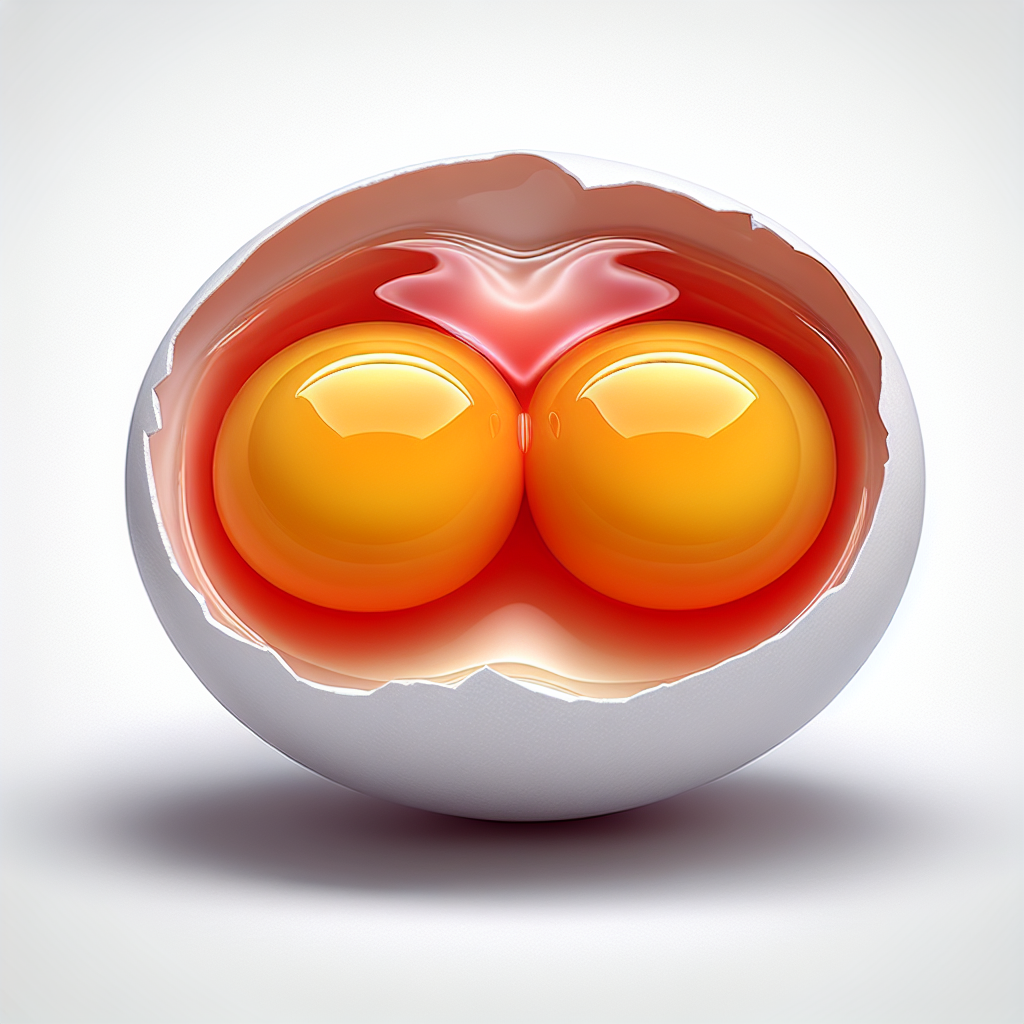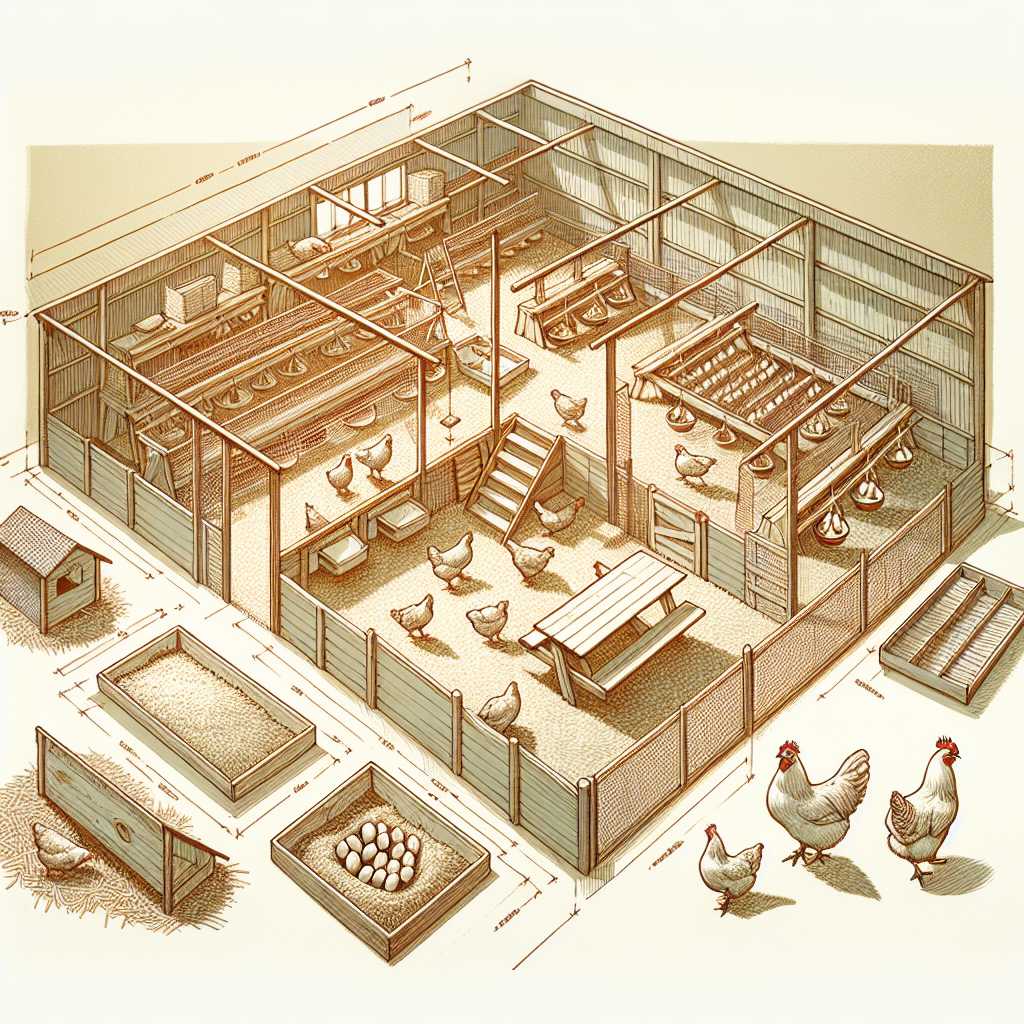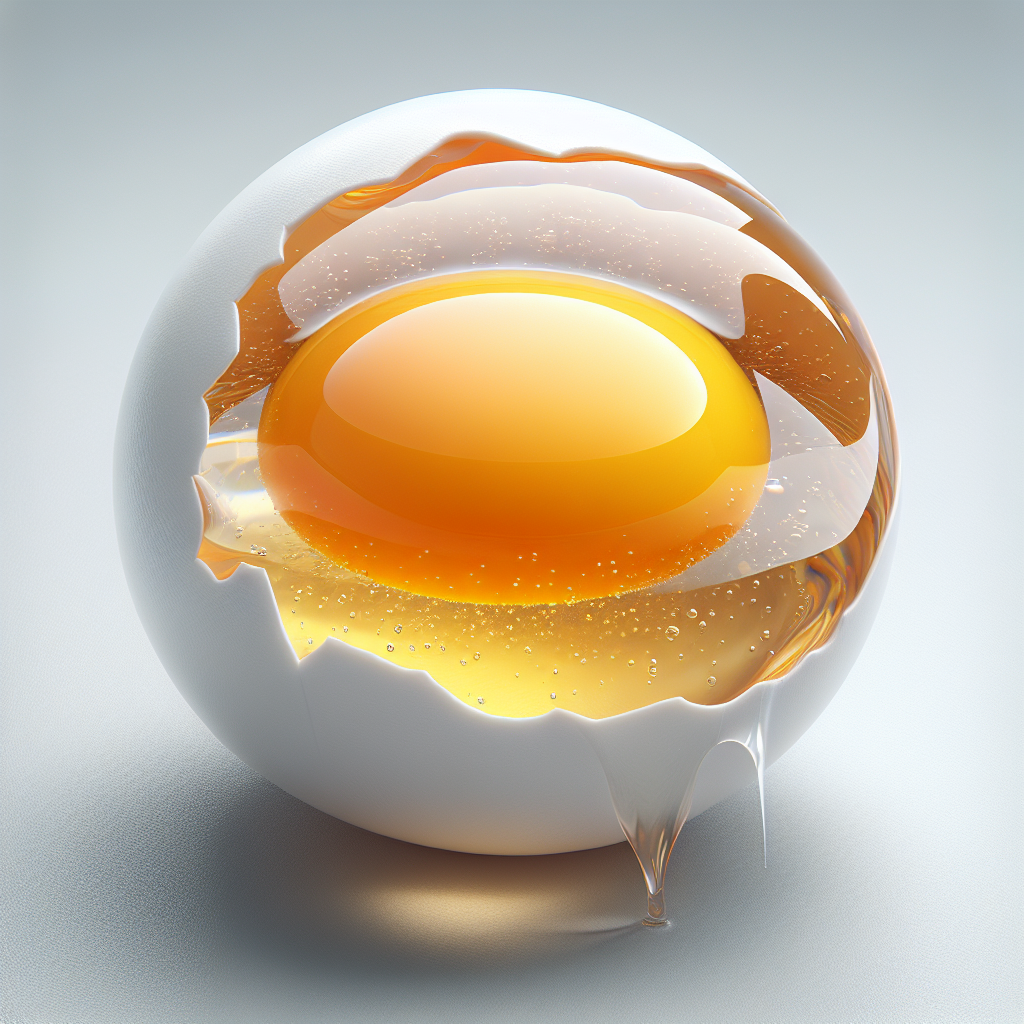Have you ever cracked open an egg and found not one, but two yolks staring back at you? It’s an intriguing phenomenon, isn’t it? In this article, we will explore the reasons behind why your hen might produce a double-yolked egg and whether it is a common occurrence. Get ready to unravel the mysteries of double-yolked eggs and gain a deeper understanding of your feathered friend’s reproductive process.
Causes of Double-Yolked Eggs
Double-yolked eggs can be quite a surprise when you crack them open in the kitchen, but have you ever wondered what causes this phenomenon? There are several factors that contribute to the occurrence of double yolks in eggs, ranging from genetic factors to the age of the hen. In this article, we will explore the various causes in detail and shed light on why your hen might be producing these intriguing eggs.
Genetic factors
One of the primary causes of double-yolked eggs can be attributed to genetic factors. Just like some traits are inherited in humans, chickens can also possess genetic predispositions that result in the production of double yolks. Certain breeds of chickens are more prone to producing double-yolked eggs, indicating that the genetic makeup of the bird plays a significant role in the occurrence of this phenomenon.
Inherited traits
The genetic predisposition for double yolks can be inherited through generations of chickens. If a chicken hails from a lineage of birds that have been known to produce double-yolked eggs, there is a higher likelihood of that specific chicken also producing similar eggs. This highlights the influence of inherited traits on the occurrence of double yolks in eggs.
Specific breeds prone to double yolks
While all chickens have the potential to lay double-yolked eggs, certain breeds are more prone to this occurrence. Breeds such as the Sussex, Plymouth Rock, and Orpington have a higher likelihood of producing double-yolked eggs. This suggests that the genetic makeup of these specific breeds includes factors that make double-yolked eggs more common.
Young hens
Young hens, especially those in the early stages of their reproductive life, are more likely to lay double-yolked eggs. This can be attributed to their immature reproductive system and irregular ovulation patterns.
Immature reproductive system
When hens are still developing and maturing, their reproductive system may not be fully functional. As a result, they may produce eggs with two yolks instead of the usual one. This is more common in the first stages of their egg-laying career and tends to decrease with age.
Irregular ovulation
Young hens may also experience irregular ovulation, which can lead to the formation of double-yolked eggs. The ovulation process in hens can be affected by various factors, including stress and hormonal imbalances. These irregularities can cause the release of two eggs at once, resulting in a double-yolked egg.
Stress
Stress can have a significant impact on a hen’s reproductive system and egg production. Environmental changes, predator threats, lack of proper shelter, and inadequate feed or water can all contribute to a hen experiencing stress and, subsequently, laying double-yolked eggs.
Environmental changes
Sudden changes in the hen’s environment can cause stress, which may affect the normal functioning of its reproductive system. This includes changes in temperature, lighting conditions, or the introduction of new hens into the flock. When hens experience stress, it can disrupt their ovulation process, leading to the formation of double-yolked eggs.
Predator threats
The presence of predators can induce stress in hens, affecting their reproductive system. When hens feel threatened by potential predators, their bodies may respond by producing eggs with two yolks. While this response is a natural defense mechanism, it can also result in the production of double-yolked eggs.
Lack of proper shelter
Hens that do not have access to adequate shelter may experience increased stress levels. Exposure to harsh weather conditions or a lack of secure nesting areas can disrupt their natural reproductive cycle, leading to the production of double-yolked eggs.
Inadequate feed or water
A hen’s diet plays a crucial role in its overall health and egg production. If a hen does not receive an appropriate diet with sufficient nutrients, this can cause stress and affect its reproductive system. Similarly, if a hen does not have access to an adequate water supply, it can lead to dehydration and potentially disrupt the ovulation process, resulting in double-yolked eggs.
Hormonal imbalance
Hormonal imbalances in hens can also contribute to the production of double-yolked eggs. Disruptions in estrogen levels and abnormalities in the functions of the oviduct can lead to the formation of eggs with two yolks.
Disruption in estrogen levels
Estrogen is a hormone that plays an essential role in the reproductive cycle of hens. Any disruption in estrogen levels can have a direct impact on their egg production. When estrogen levels are imbalanced, it can lead to the release of multiple eggs at once, resulting in double-yolked eggs.
Abnormalities in oviduct functions
The oviduct is the part of a hen’s reproductive system where eggs are formed and where the yolks and albumen are added. If there are abnormalities in the functioning of the oviduct, such as the failure to separate two yolks adequately, it can result in the production of double-yolked eggs.
Larger breed hens
The size and breed of the hen can also contribute to the likelihood of double-yolked eggs. Larger breed hens tend to have a higher occurrence of double-yolked eggs, primarily due to their larger egg sizes.
Increased chances of double yolks
Large breed hens, such as the Jersey Giant or the Brahma, naturally have a higher probability of producing double-yolked eggs. The larger size of their eggs provides more space for two yolks to develop simultaneously.
Higher egg sizes
Larger breed hens tend to lay larger eggs compared to smaller breeds. Given the larger size, it is more likely that two yolks will be released simultaneously during ovulation, resulting in the production of double-yolked eggs.
Breeding programs
In some cases, the occurrence of double-yolked eggs can be a result of intentional breeding programs or selective breeding practices.
Intentional breeding for double yolks
Certain commercial egg producers intentionally breed chickens that are more likely to lay double-yolked eggs. These eggs can be sold as specialty items or used in specific culinary applications where double yolks are desired. Breeding for double yolks allows producers to meet the demand for these unique eggs.
Selective breeding practices
Selective breeding practices, aimed at enhancing specific egg traits, can inadvertently lead to an increase in double-yolked eggs. When breeders focus on other desirable characteristics, such as egg size or quantity, it can create conditions that promote the occurrence of double-yolked eggs.
Age of the hen
The age of the hen also plays a role in the likelihood of double-yolked eggs. While young hens are more prone to producing these eggs, the occurrence tends to decrease as the hen ages.
Higher occurrence in young hens
Young hens who have just started laying eggs are more likely to produce double-yolked eggs. As they mature and their reproductive system becomes more regular, the frequency of double-yolked eggs decreases.
Decrease with age
As hens age, their reproductive system becomes more stable, leading to a decrease in the production of double-yolked eggs. Older hens tend to lay eggs with a single yolk more consistently compared to younger hens.
Nutrition
Nutrition plays a crucial role in a hen’s overall health and egg production. An imbalanced diet or excessive protein intake can contribute to the occurrence of double-yolked eggs.
Imbalanced diet
A diet lacking in essential nutrients or imbalanced in its composition can negatively impact a hen’s reproductive system. If a hen does not receive sufficient nutrients, it may experience irregularities in its reproductive cycle, potentially leading to the production of double-yolked eggs.
Excessive protein intake
While protein is a vital component of a hen’s diet, excessive protein intake can disrupt the balance of hormones and nutrients needed for normal egg production. An overabundance of protein in the hen’s diet may stimulate the release of multiple yolks during ovulation, resulting in the formation of double-yolked eggs.
Egg abnormalities
Sometimes, double-yolked eggs can be a result of egg abnormalities, rather than factors related to the hen’s reproductive system or genetics. These abnormalities may occur during the formation or development of the egg.
Interruption in ovulation process
An interruption in the ovulation process can lead to the production of double-yolked eggs. This interruption can be caused by multiple factors, including stress, hormonal imbalances, or underlying health conditions. When the ovulation process is disrupted, it may result in the simultaneous release of two yolks, leading to the formation of double-yolked eggs.
Common or uncommon phenomenon
The occurrence of double-yolked eggs can vary in terms of frequency and prevalence. While double-yolked eggs may seem relatively rare, they are more common in certain circumstances.
Relatively rare occurrence
In general, double-yolked eggs are less common than eggs with a single yolk. However, factors such as genetics, breed, and age can influence the likelihood of producing double-yolked eggs.
Higher occurrence in specific circumstances
Certain circumstances increase the chances of producing double-yolked eggs. For example, young hens, larger breed hens, and hens from specific breeds are more likely to lay these eggs. Additionally, intentional breeding programs for double yolks can artificially increase the occurrence of double-yolked eggs.
Seasonal variations
The occurrence of double-yolked eggs can also exhibit seasonal variations. It is not uncommon for some hens to lay more double-yolked eggs during specific times of the year, potentially due to hormonal changes or environmental factors.
In conclusion, the causes of double-yolked eggs are multifaceted and can be attributed to various factors such as genetic predispositions, the age of the hen, stressors, hormonal imbalances, nutrition, and even specific breeding practices. While these eggs may be fascinating and surprising to come across, they are not uncommon in specific circumstances. So, the next time you crack open a double-yolked egg, you can appreciate the complex interplay of factors that led to its creation.




